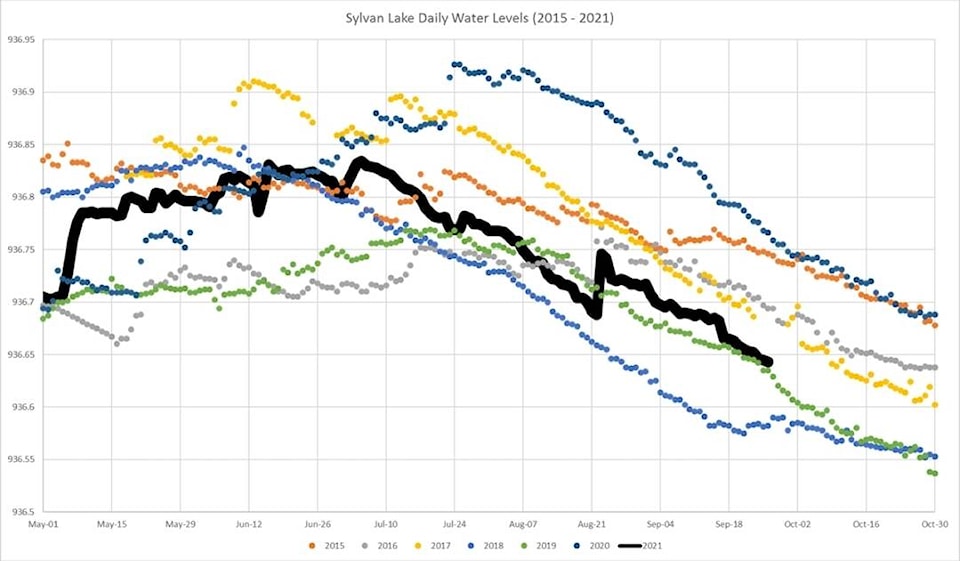A Sylvan Lake resident stirred up the conversation regarding his notice of recent water level fluctuations in the lake. Alberta Environment Parks (AEP) Regional Hydrologist based out of the Red Deer office, Terry Chamulak, confirms this is perfectly normal and is no matter of concern.
Confirming the observations of the resident, Chamulak shared with Sylvan Lake News last week, “In 2021, Sylvan Lake water levels have dropped 0.191 m (7.5 inches) from a maximum of 936.83 inches (July 5) to 936.64 inches (Sept 26).” He added that the 7.5-inch drop as of the last few days is within the nine and quarter (9.25) inches that the lake normally sees in a year.
Sylvan Lake is experiencing conditions dryer than normal, with greater evaporative losses, and has received slightly more than half of the normal precipitation, said Chamulak, adding, “Sylvan Lake has experienced 50 percent to 80 percent normal precipitation in 2021. The dry conditions resulted in AEP closing several basins in Central Region to diversions.”
Chamulak shared that Sylvan Lake levels normally drop throughout the summer from evaporative losses averaging 0.23 m (9.25 inches) per year. In spite of the dry conditions, this year’s Sylvan Lake water levels are within their normal range and well within natural variability.
Chamulak explained that every lake kind of has its own unique hydrology and that groundwater inflow has a huge impact on lake water levels. He said that lakes with more groundwater flow are usually less susceptible to climate change.
“Even though conditions are very dry, Sylvan Lake water levels are augmented by about 20 percent groundwater, but still 80 percent of surface water. And there has been a lot of dryer conditions this year. So, Sylvan Lake water levels are nonetheless impacted. But, groundwater does help to stabilize levels. At least it has kept the level within the normal range, which we expect would be normal variability.”
Chamulak shared that the water level this year approximates the historic average daily recorded levels. “If you chart the average value for every day, going back to the 1960s, the water levels in Sylvan Lake for 2021 almost overlie perfectly on top of the historic long-term average (see graph 1.1). It’s surprisingly close. So, it’s really nothing unusual in terms of what we are seeing right now for Sylvan Lake,” he said, adding, “In fact, Sylvan Lake was at a lower level a couple of years ago, than it is today.”
